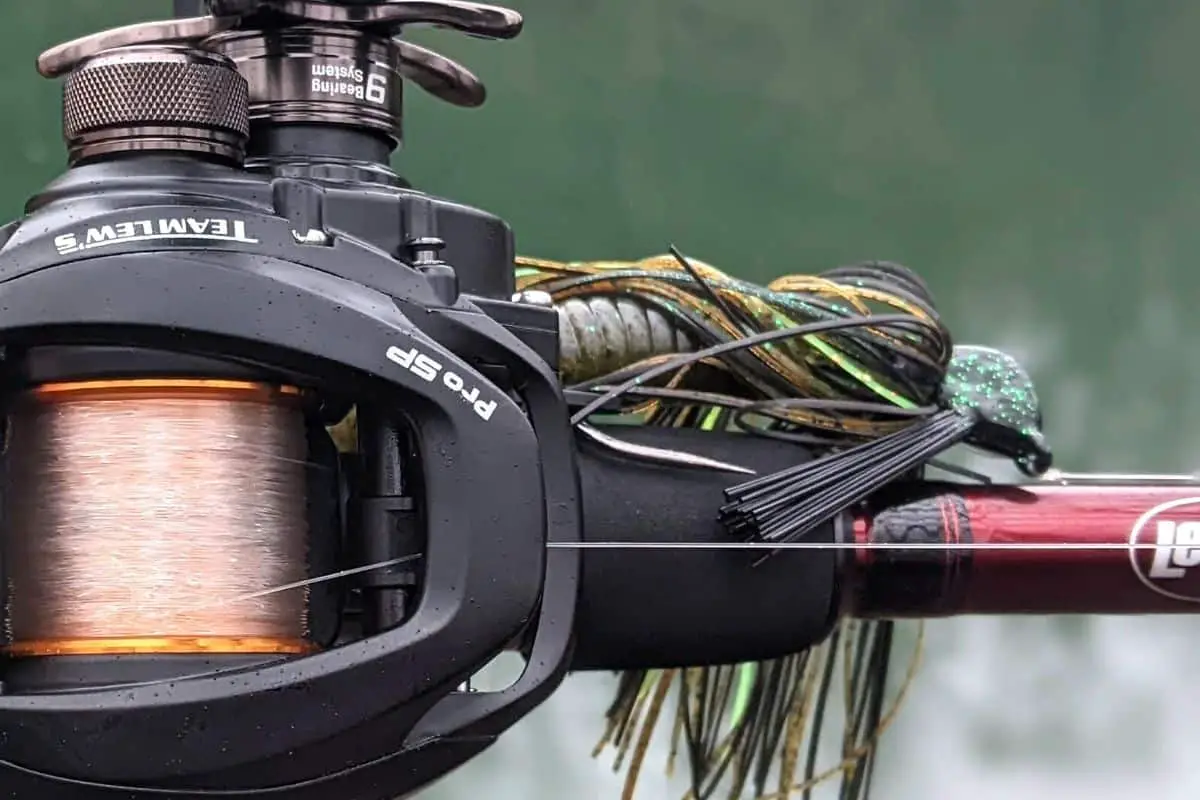Every year it seems like faster and faster gear ratios are available. This confuses many anglers when they attempt to buy the right reel for the right technique.
While anglers can have success with one gear ratio reel, certain techniques are best suited to specific gear ratios. In general, lures that are presented in one spot are well-paired with high-speed reels that retrieve the lure quickly when the presentation is finished. Lures presented on a horizontal retrieve often do well with a slower gear ratio like a 6.2:1.
We will break down the specifics of how gear ratio can impact angler success when utilized with the appropriate techniques.
How Gear Ratio Has Changed in Baitcast Reels
It wasn’t that long ago a 5.2:1 was common. Now it is almost impossible to find a manufacturer that still offers a model with that gear ratio. It has nothing to do with how well that ratio pairs with certain techniques, it is all about anglers wanting faster reels. That is what is selling so that is what companies are making.
The table below shows the differences in line pickup from a low-speed to a high-speed reel.
| Gear Ratio | Inches of Recovery Per Turn (RPT) |
| 5.1:1 | 21″ |
| 6.2:1 | 25″ |
| 7.5:1 | 31″ |
| 8.3:1 | 35″ |
| 9.5:1 | 40″ |
Before purchasing a reel, an angler needs to take into consideration whether this is going to be a single rod and reel combo for multiple applications or a setup that is tailored for a specific technique.
As long as anglers keep purchasing higher-speed reels, manufacturers are going to push the limits of what we consider fast. As the above table shows, this can have a dramatic impact on how much line is recovered and the action it imparts on our lures.

Bass Fishing Techniques That are Best Suited for High-Speed Reels
I like to break bass fishing down into two different categories: horizontal and vertical presentations.
Horizontal presentations are those that use lures moving towards the angler higher in the water column. Offerings like swim baits, swim jigs, most topwaters, squarebills, etc., are all lures that focus on a horizontal retrieve.
Vertical presentations are those that present a lure to a specific location and then it is worked, usually on the bottom, for a short distance and then quickly retrieved to make another cast to a specific spot. This includes jigs, Texas-rigged soft plastics, wacky rigs, etc.
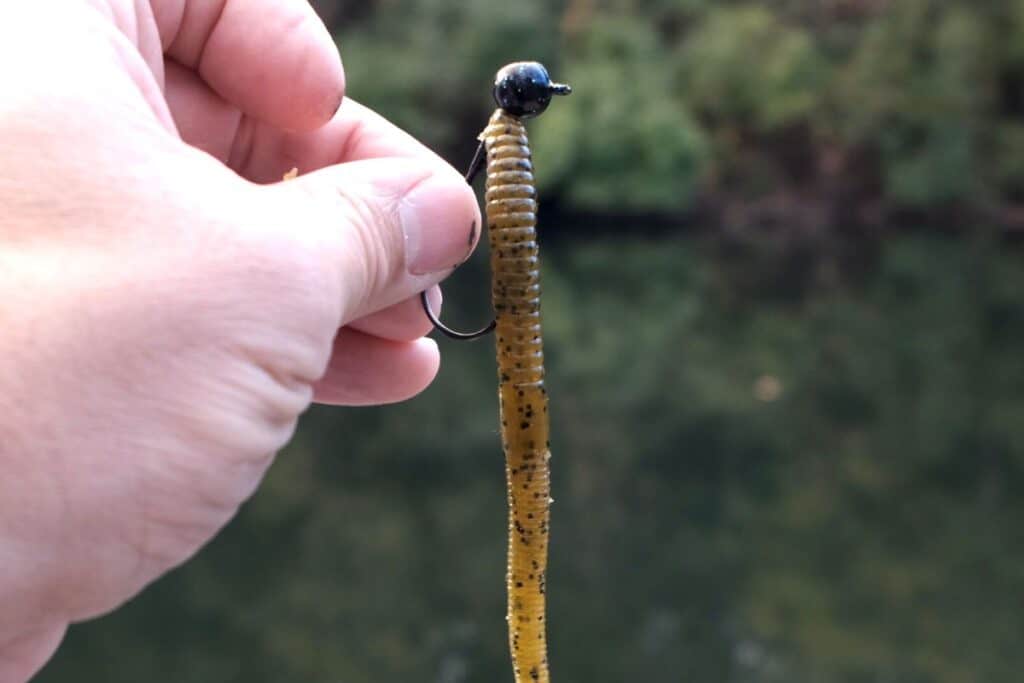
These vertical presentations are perfect for high-speed gear ratios and this is where most pro anglers use them.
Forty inches of recovery per turn is going to result in many more casts per day than a lower gear ratio reel that only brings in twenty-five.
Bass anglers flipping jigs into visible cover will get that lure presented to more bass in a shorter amount of time. Fishing is often a game of percentages. The more opportunities the more likely you will have success and decipher what is happening on any given day.

Fishing Thick Cover and High-Speed Reels
Another important component of using fast reels is how quickly an angler can get that fish out of cover. This is often a critical factor when using vertically presented lures like jigs and Texas-rigged soft plastics.
When a bass, especially a big bass, is in thick cover it is easy to lose the fish. It will turn and get buried up and will often pull off. A high-speed reel paired with the right rod and line keeps the fish from turning its head and getting in the thick stuff. The first couple of seconds can make the difference between landing the bass and losing it.
Besides the jigs and Texas rigs, high-speed reels are perfect for fishing hollow-body frogs in thick vegetation.
Any time the cover is dense a high-speed reel is an excellent choice when fishing specific spots with traditional vertically presented lures.
Other Bass Fishing Techniques Well-Paired with High-Speed Reels
Another factor to consider for anglers when choosing a reel is to think about the retrieve of the presentation they are looking to use.
For example, let’s go over the popular Carolina rig.
This presentation relies on the angler moving the rod to impart action on the lure, not the reel. The reel is used to pick up the slack after the sweep of the rod.
A high-speed reel is great for a Carolina rig because of this.
This presentation is notorious for having bass pick up the lure and then run to deeper water. If an angler is in a boat and not on the shore, this puts a lot of slack in the line in a hurry. We must attempt to “catch up” to the bass by reeling in that slack fast to set the hook. A high-speed reel is an excellent tool for this specific technique and situation.
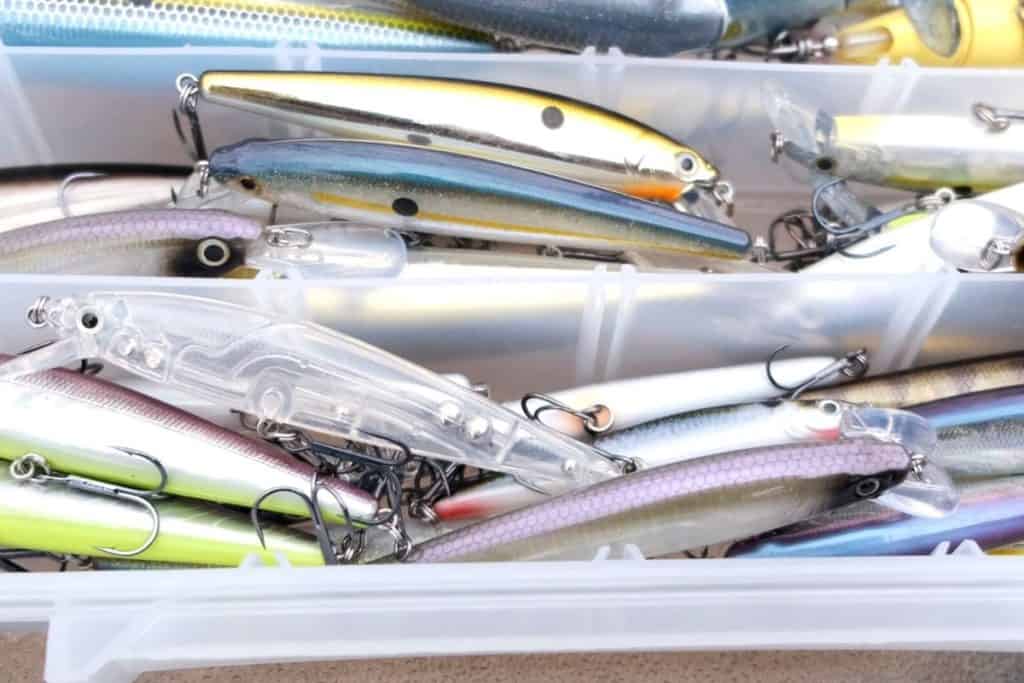
Another presentation that uses the rod to move the lure and not the reel is when we rip suspending jerkbaits.
Successful jerkbait anglers always rip the lure on a slack line. This creates the most side-to-side erratic action that draws those famous reaction strikes. The reel just picks up some of the slack line between rips.
Some of the best jerkbait anglers on the planet use a higher gear ratio reel for this specific presentation. Once again, only to retrieve slack, not to move the lure.
Horizontally Presented Lures and the Best Gear Ratio
This is where things are a little different. As bass anglers, we need to realize that most of the time we fish lures that are presented in this manner at the most ineffective speed.
Let me explain.
We often get “stuck in the middle.”
We do not present these horizontal lures slow enough or fast enough. We bring them back to us at a middle speed that is the least effective for catching bass.
Bass are in one of two moods. They are either extremely aggressive and feeding or they are not. We all know that the latter is what we run across most often.
When the bass are not actively chasing prey all over an angler must rely on one of two scenarios – either present a lure that offers itself as an easy meal that cannot be passed up or get the bass to react. These two situations are at either end of the “speed” spectrum.
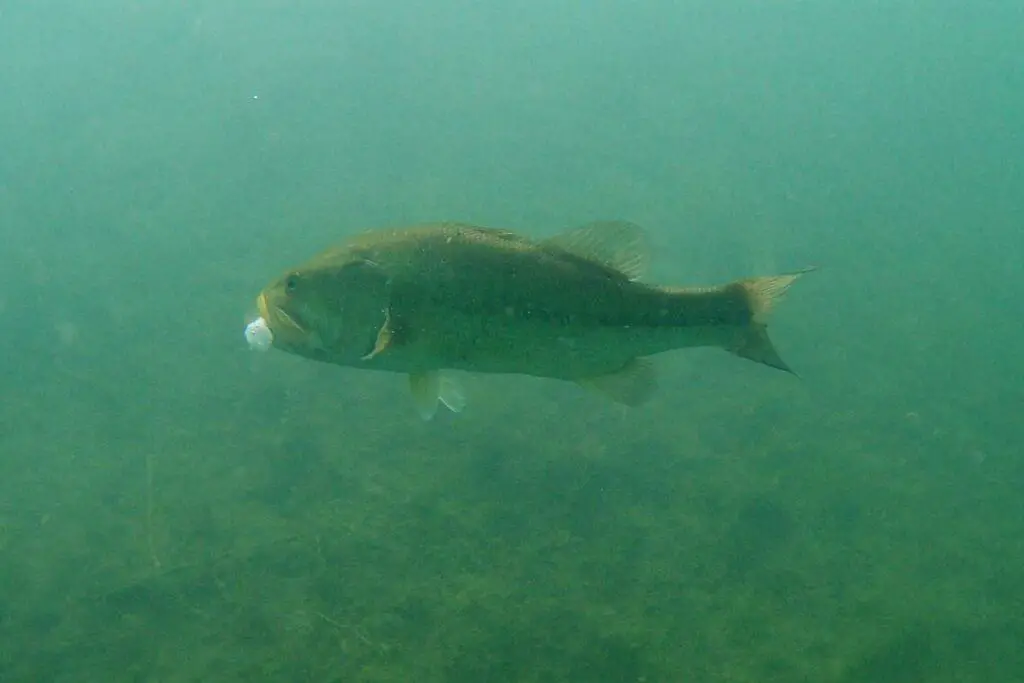
If we are using a small swimbait, we want to retrieve that lure in a manner that looks like a sick, wounded, or unaware prey species that is too tempting to pass up. This means using a slow retrieve with some start-stop action that presents an easy meal. Think about a lone shad, minnow, or panfish lazily moving along.
A slower gear-ratio reel will help an angler achieve this. It is easy to fish too fast. Using equipment that will naturally keep us working at a slower pace is an effective and efficient tool.
What Filming Underwater Has Taught Me
I have spent countless hours filming both bass and prey species underwater.
One undeniable fact is that baitfish are either hardly moving at all or they are moving super fast evading a predator. Our horizontal lures need to mimic this.
Either bring them back painfully slow or burn them.
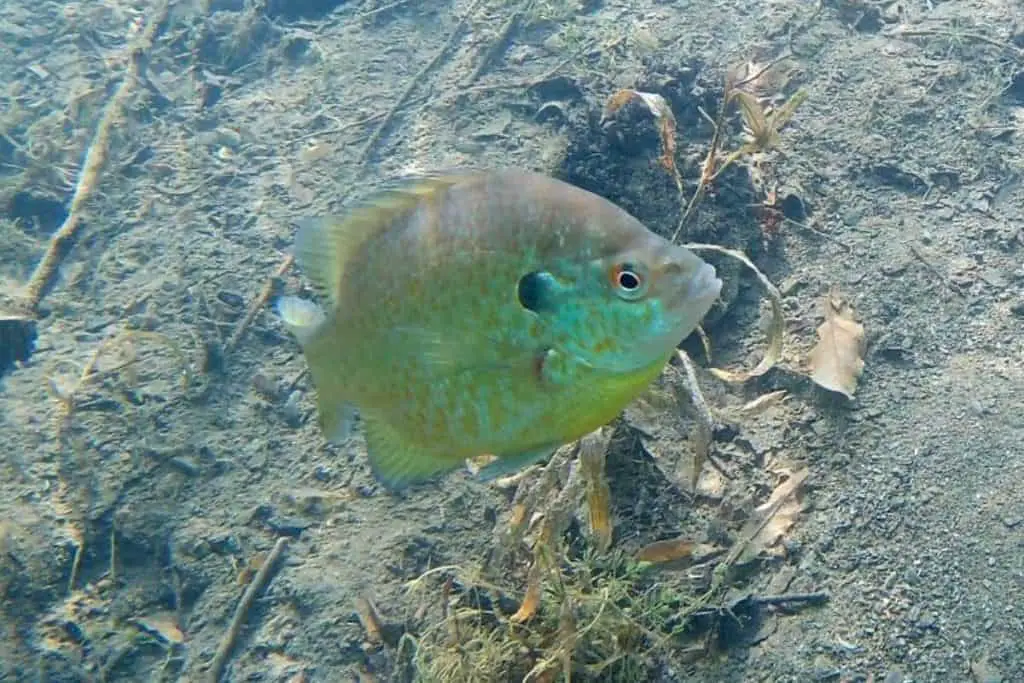
I have also watched bass come to investigate a lure and follow it many times and then turn away. They are curious, but nothing is happening with the lure to make them want to eat it.
Reels in the 6.2:1 gear ratio are my favorites for these lures that I want to barely swim along. Many anglers will use a reel in the 7.5:1 gear ratio as well.
Crankbaits and Gear Ratios
Crankbaits are broken into deep divers and squarebills.
Deep diving crankbaits are best suited for reels that bring them back slower. This helps the efficiency of the dive plane and wobble. Deep divers reach maximum depth when retrieved slower. This crawling action also allows us to feel and decipher cover, even brush, without getting hung up as often. Ideally, I will use a 5.2:1 that retrieves about 21” of line per turn. As mentioned earlier, these are hard to find. Most of my crankbait reels are now in that 6.2:1 ratio.
(Here is an article on how effective small crankbaits can be.)
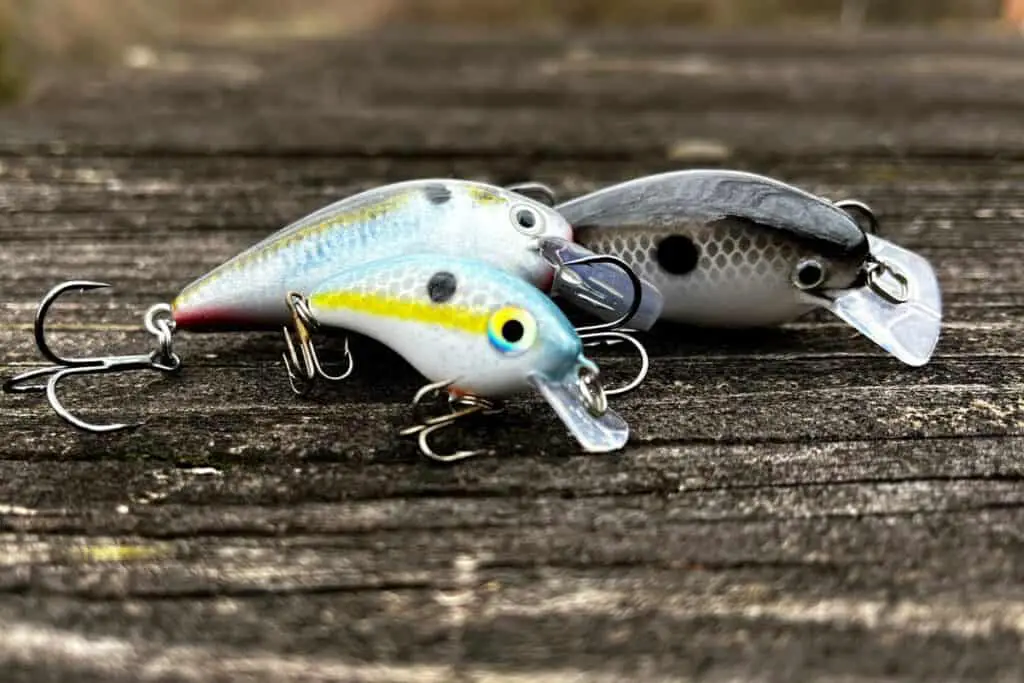
Squarebill Crankbaits and Gear Ratio
Squarebill crankbaits are a different creature. These lures shine when burned as fast as possible. And I mean fast.
Throw in an erratic start-stop action and the bites can be ferocious. This type of retrieve draws the coveted reaction strike from lethargic bass.
When fishing squarebill crankbaits I want a reel at the upper end of the gear ratio spectrum. If you have never burned squarebills, it can feel strange at first, but it works. Bass fishing legend, Rick Clunn, is a huge proponent of burning squarebills and talks about it many times in various articles and videos.
Within the crankbait realm, we have a perfect example of fishing both ends of the speed spectrum. The worst place to be is right in the middle and gear ratios should be selected accordingly.
Best Gear Ratio if an Angler Wants a Multi-Purpose Combo
While many of us dream of perfectly matching a rod and reel for every bass fishing technique, the reality is that it can be very expensive. And if you are a bank angler it is impractical to carry around that much equipment.
For anglers wanting a reel that will work for multiple situations, a baitcast reel in either the 6.2:1 range or 7.2:1 is ideal. We can force ourselves to retrieve the lure slower yet still have enough speed when needed.
Always think about your end goal when selecting a reel. Is it a general-purpose do-everything setup? Or do you want to buy it for a specific technique? Then match the gear ratio accordingly.
Good luck out there and make sure to encourage someone today. You never know how you may change their life forever.
Isaiah 6:8

